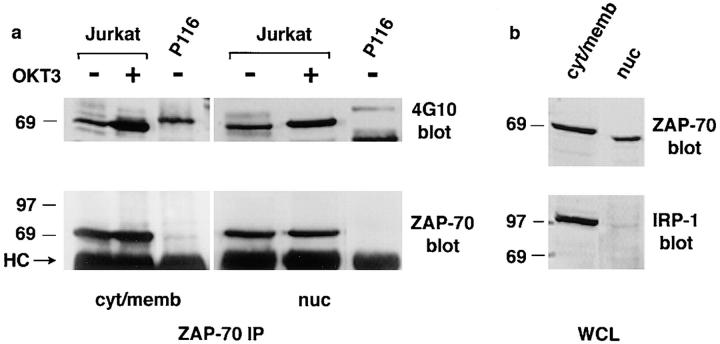Figure 9.
Biochemical isolation of ZAP-70 from nuclei of Jurkat cells, and demonstration of its increased tyrosine phosphorylation after anti-TCR stimulation. (a) Cytosol/membrane (1.2 × 107 cells) and nuclear fractions (2.6 × 107 cells) of Jurkat or P116 cells, immunoprecipitated with anti–ZAP-70, were analyzed by antiphosphotyrosine Western blotting (top). The stripped membrane was reprobed with anti–ZAP-70 (bottom). Specific activity of ZAP-70 after cellular stimulation was 2.4 for cytosolic/membrane ZAP-70 and 1.4 for nuclear ZAP-70. A nonspecific band appears in the 4G10 blot of P116 cells, which migrates more slowly than the phosphorylated ZAP-70. (b) Whole lysate samples from the purified material (6 × 105 cells/lane) was immunoblotted with anti–ZAP-70, and then reprobed with anti–IRP-1. Densitometric analysis confirmed that there was a 5.3 fold enrichment of ZAP-70 in the nuclear fraction as compared to IRP-1. This was confirmed in 3 independent experiments, with enrichment of ZAP-70 as compared to IRP-n1 ranging from 5 fold to 6.2 fold.

